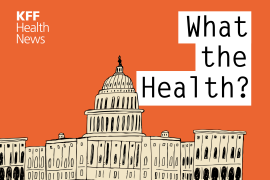Native American Tribe Uses Traditional Methods To Discourage Onset of, Help Members Manage Type 2 Diabetes
The Washington Post's April 9 health section examines the Ho-Chunk Indian tribe in South Dakota, which is trying to combat type 2 diabetes by using traditional tribal practices. According to studies by the Agency for Healthcare Research and Quality, Native Americans are approximately three times more likely than whites to have diabetes. Further, NIH studies indicate that Native Americans have the highest rate of diabetes in the world, with as many as half of all adults in some tribal subpopulations afflicted. While recent medical research shows that "lifestyle" adjustments, including improving diet and increasing exercise, are more effective than using medications to prevent and treat the disease, convincing Native Americans to make such changes "has proved quite difficult," the Post reports. According to the Post, Native Americans' cultural backgrounds "may discourage or even prevent" them from complying with a more mainstream health practice. For instance, "the idea that family members come first" may lead some Native Americans to "feel it's selfish to make self-care a priority," the Post reports. In addition, many native communities foster the idea of fatalism -- the notion that "disease is inevitable" and no amount of "medical care or personal changes can forestall death." But use of traditional tribal practices has shown some success in combatting incidence of type 2 diabetes, the Post reports. For instance, health officials have used "talking circles" -- groups of people gathered in a circle to discuss certain topics -- to help tribe members with diabetes "receive education, exercise demonstrations and emotional and spiritual counseling." In addition, other programs have reintroduced "traditional," healthier foods into tribe members' diets and have helped provide tribe members with access to exercise equipment and programs (Pember, Washington Post, 4/9).
This is part of the Morning Briefing, a summary of health policy coverage from major news organizations. Sign up for an email subscription.





